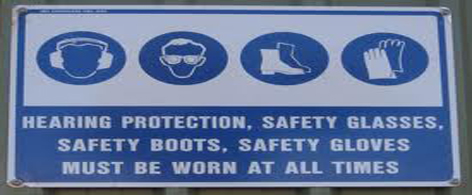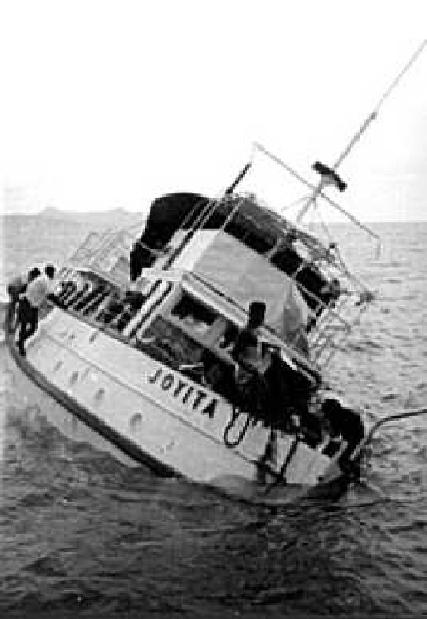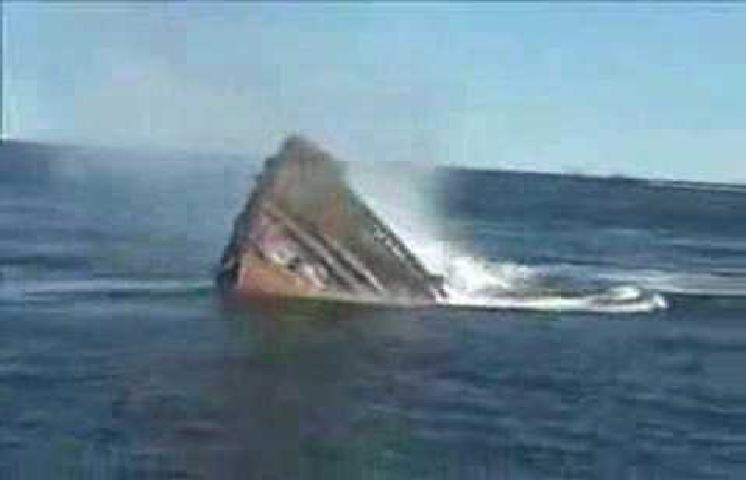
The below mentioned are general health and safety tips for the workshop and although we are talking in the marine context, these are applicable in general in the industry.
Industrial Safety
Many accidents occur in workshops which may range from minor accidents to major happenings. Sometimes these could result in death, sometimes in permanent disablement and in many cases, fortunately, in nothing worse than a few days’ or weeks’ absence from work. Even if an accident does not render the victim unfit for work it makes him liable to infection, or any other of the ills which may be contracted as the result of injury and shock.
Statistics gathered of the accidents taking place in workshops show, in general, that of every three accidents which occur, two are caused by the personal element of the victim, and one by means beyond his control. To put it briefly, we may say that two out of three are the victim’s own fault, and the third was due to unsafe-working conditions.
Some of the sources of work shop accidents
Machines
Power-drive machines are most like source of accidents, however well the moving parts may be protected. An operator who is careful at first may gradually, through familiarity, take risks he ought not to take, and ultimately he will meet with a misfortune which he will call bad luck’ though it is a case of negligence of workshop health and safety issues.
Confidence is a necessary part of our characters and without it we should be of little use in a machine shop. Over-confidence, however, is to be guarded against at all costs. The first thing the operator of a machine should find out is the quickest way to stop the machine, and he should practice this until it can be performed instantly, and without thinking. If we are involved in an awkward situation on a power-driven machine, a fraction of a second may mean the difference between a humorous and a serious result.
The rotating bolt on the driving plate of a lathe is a danger-spot, and if filing must be done on work between centers it is safer to file left-handed. Rotating work, whether between centers or held in the chuck, is generally rather rough after a cut has been taken over it, the roughness of ten being sufficient to pick up rag, or waste held to it. If the waste alone is taken round no harm is done, but if the hand holding the waste cannot be disentangled in time the result is likely to be serious.
On many machine operations the work must be clamped to the table of the machine. If the clamping has been carelessly done the work may move when the force of the cut comes on it. In drilling, particularly, we may imagine that a hole can be drilled with the work only lightly supported, or even held from rotating by the left hand, but sooner or later we shall regret it. Also the waste metal (swarf) which is removed by the cutting tool on machines should not be handled. Turnings particularly are sharp and ragged, being capable of inflicting deep and painful cuts. A good plan is to keep handy a metal hook or rake with which to handle these.
Driving belts
Some machines are driven by belts from overhead shafting. When these belts have to be moved from one to another for the purpose of changing the speed of the machine, the belt should not be touched by hand when it is moving, but should be manipulated by a bar of metal or a spanner. In addition to the risk of the hand being entrapped between the belt and the pulley, there is the danger of a projecting part of the steel belt lacing catching the hand tearing the flesh. The guarding of dangerous belts is the concern of the management of the works and is generally well looked after according to the advice of the Factory Inspector.
Loose and flapping clothing may at any time become entangled in a belt or moving part which is not adequately covered, and for this reason overalls without loose ends are to be recommended. If a pair of combination overalls is worn and the ends of the sleeves are buttoned up fairly tightly, or secured with elastic bands, the risk of accidents through loose clothing is greatly minimized.
Non-Mechanical Accidents
The Presence Of machines or moving belts is not the only cause of serious accidents. Badly fitting spanners may slip with disastrous results to the knuckles, and it should be ascertained that a spanner fits well before putting the full load on to it.
A loose file haft may result in the spike at the end of the file being driven into the hand if the haft slips off on the draw stroke of the file. Metal or tools struck with a hammer without sufficient regard to their support against the blow may cause the striker to wish he had been more observant.
We should cultivate the ‘safety-first’ habit and then, if misfortune does come his way, he can truly say it was bad luck, but if he takes simple and elementary precautions it is unlikely that anything very serious will happen.
Accidents of all types are rendered more probable by overtime and tiredness, the speeding up of production beyond the economic rate, bad lighting, cold working conditions, etc., and especial should be exercised under any such conditions.
Mechanical Accidents
Lets us examine some of the causes of accidents which are a result of dangerous working conditions, e.g. unguarded machinery, etc., and against which it is the responsibility of the management to provide safeguards.
However smooth a shaft may be there is always the risk of loose clothing being caught and wound up, and if there are rotating projections such as bolt or key heads the dangers are very much greater. If such shafts are in such a position as to be touched by clothing they must be guarded. Belting which may break and fall on person underneath, open belt drives which may catch the clothing of passers-by, and any moving parts which are deemed to be dangerous, must be provided with some type of guard.

Power presses and milling machines are another source of mechanical accidents. When work must be put under a press by hand, it is not possible to fit a permanent guard, so that various safety devices have been devised which close as the press ram descends. These guards are so designed that in closing they would sweep the hands away if they were in danger. One example of such a guard is shown at Fig. 1, the functioning of which will be obvious. The vertical bar at the right-hand end of the gate is a rubber cased spring to soften the blow should the gate strike the operator’s hand.
The danger-point on a milling machine is the cutter, and Fig. 2 shows an example of a guard for keeping the hands away from this.

In case of cranes and lifting tackle they must be marked with its safe working load, that it must be examined within specified periods, that it must be tested and certified before purchase, and that the chains must be periodically annealed (see notes on work and strain hardening).
We will continue with this study in our next post on health and safety in the workshop….
Health and Safety In The Workshop,






